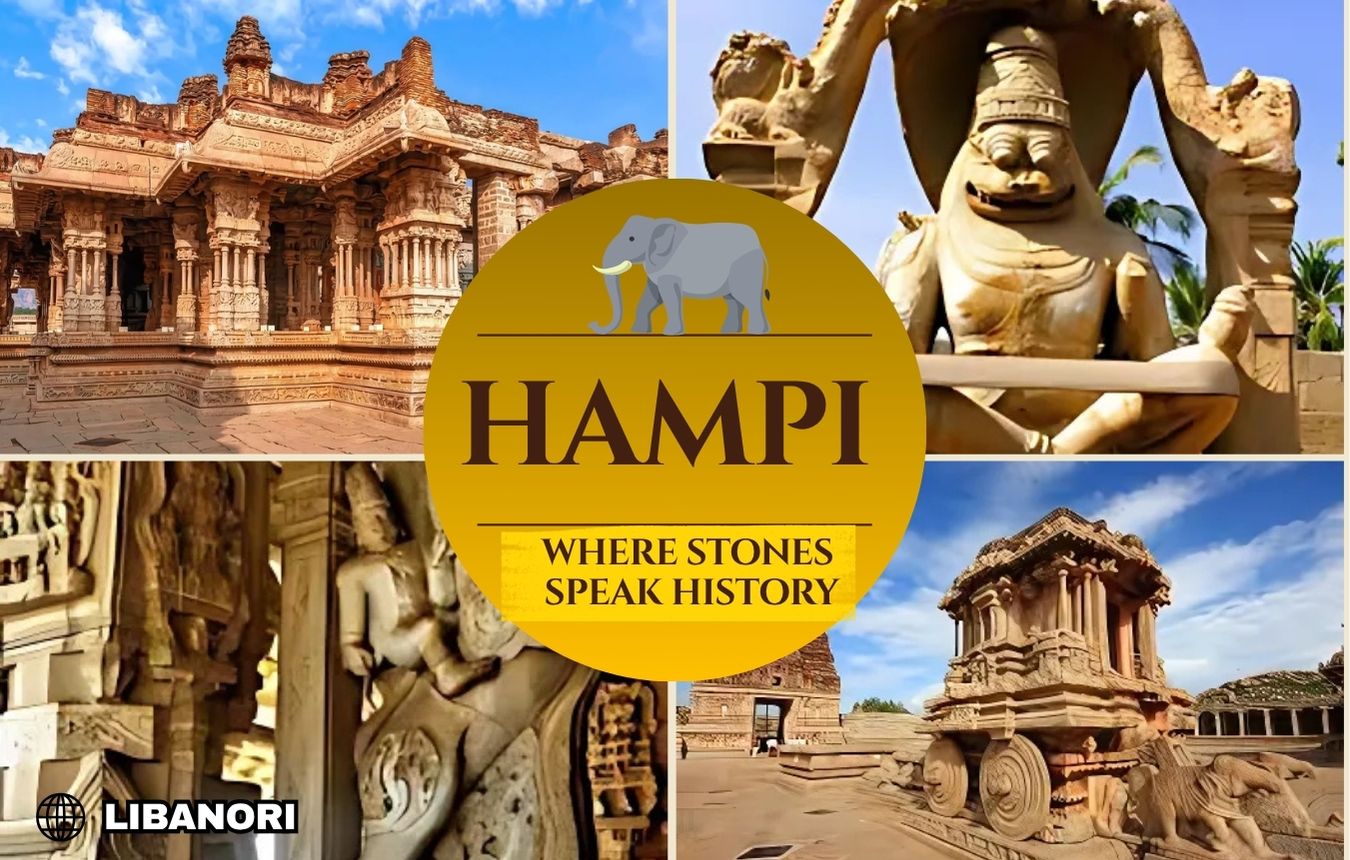Hampi is a city where ancient edifices whisper the tales of great rulers and their kingdoms that once seemed invincible but are now down to dust. Once a beaming capital of a prominent empire named Vijayanagara, it was the epicenter of power. The Vijaynagar Empire, also known as ‘The Kingdom of Karnataka’. Was a great Hindu kingdom that thrived in South India from 1336 to 1646.
Hampi was their key metropolis; it was a cultural beacon of its time. It was on the same footing as many western civilizations in terms of grandeur. Let’s get into the historical city of Hampi, embellished with architectural marvels. And how you can experience the echoes from the past by walking along the time-torn wall yourself.
A Glimpse of Hampi
Hampi is a city in the Southern part of India, positioned located on the banks of the River Tungabhadra, Karnataka. It . With a rich cultural and historical background, the land of Hampi has witnessed different sets of kingdoms. While managing to remain a civilizational hotbed for a significant time. It was known as Kishkindha during in the age of Ramayan, according to some.
The jewel of the Vijaynagar district, Hampi, hosts the Hampi Group of Monuments, which is a UNESCO World Heritage Site. The city is home to more than 1600 monuments that still stand erect. They spread across a significant landmass, which makes this city and remarkable archeological site.
The Glory and the Ashes of Vijayanagar
The empire was established in 1336, by Bukka Raya and Harihar I. The dynasty prospered until 1646, then the city was forfeited and abandoned. Time and turmoil brought Vijayanagar to rubble, leaving behind echoes of a once-mighty kingdom.
The following mentioned dynasties held power in this empire:
- Sangama
- Saluva
- Tuluva
- Aravidu
During the reign of Krishnadevaraya, many military victories were achieved. Which led to the kingdom being more secure and open to experiencing the new culture of the territories acquired. The culture thrived under his rule, art and literature were patronized. Many efficient administrative reforms resulted in economic prosperity and political stability across one of South India’s most powerful empires.
The power of the kingdom fell after the Battle of Talikota in 1565. The resistance could not stand against the Deccan Sultans. After this clash, the empire never regained its former glory, and it slacked, exercising limited control over some areas.
Architectural Marvels and Sacred Sites
Hampi is home to monuments that are a part of Dravidian Architecture. The remains give a glimpse of the systems that were in place for different sects of society, like royals and average urban residents. Many sacred spaces were also a crucial part of the architecture that flourished during that era.
Suburban township circles the temple complexes. The towns had bazaars (markets), residential areas, and tanks that were capable of applying hydraulic technologies. The layout seamlessly integrated the town with the defense architecture. The designs of the constructions had massive dimensions, with tall towers over the entrances embellished with beautifully crafted pillars.
Temples such as the Krishna temple, Narasimha Ganesh, Achyutaraya, and Lotus Mahal are some highlights from the cluster of shrines . The Vitthala temple’s walls showcase the attention to detail of the architects while crafting the design of this holy space. The site has associated buildings that have a network of water channels.
Hampi In The Eyes of The World
This is a site that was not taken into consideration until the mid-19th century. Then Alexander Greenlaw visited and captured the site in 1856. The photographs to date happen to be the most valued source by scholars for the state of monuments then. He created a catalog that was held privately by the UK until 1980. Hampi is far from a silent ruin today. The group of monuments is a part of the UNESCO World Heritage Site.
Even after years of neglect, the structural integrity of the ancient architectural monuments and temples has sustained. The remains unearthed at the site expound both the extent of the economic prosperity and political status that once existed. Indicating how prosperous the society was.
The present perspectives acknowledge the city’s diverse attributes and complex cultural systems. The Archaeological Survey of India and UNESCO have played a crucial role in preserving and restoring key monuments, ensuring Hampi’s legacy remains for future generations to witness. On travel websites, visitors rave about the surreal scenery, the sense of going back in time.
Final Thoughts
Today, the city of Hampi is a living landscape where history and culture converge. The remains of the city, which was once the thriving heart of the Vijaynagar Empire, offer a vivid glimpse into a glorious past now reduced to ruins. The sophisticated architectural structures and planned township only make us wonder how the city would have been at its peak.
Now a UNESCO World Heritage Site, Hampi draws visitors from across the globe. To preserve the legacy of this architechtural marvel of a city, earnest efforts have been made in recent times. It is important to sustain the proof of how culturally rich and functional ancient civilizations were.
Explore, how to plan a trip to Hampi?
Frequently Asked Questions
It is inhabited since the 2nd-3rd BCE
Vijayanagara translates to “City of Victory”; the name depicted status and power.
It was called Kishkindha (the monkey kingdom) during the Ramayan era.
It is a UNESCO World Heritage Site, famous for its historical significance.
Vittal Temple, Stone Chariot, and Viruspaksha Temple are some of the key monuments that can be visited.
As Hampi’s ancient whispers fade into the twilight, the soul begins to crave the lullaby of waves and salt-kissed winds. From the sunburnt ruins to the gentle shores of Amed, Bali—let your journey drift from myth to ocean, from stone to sea.
Refresh Date: August 21, 2025



